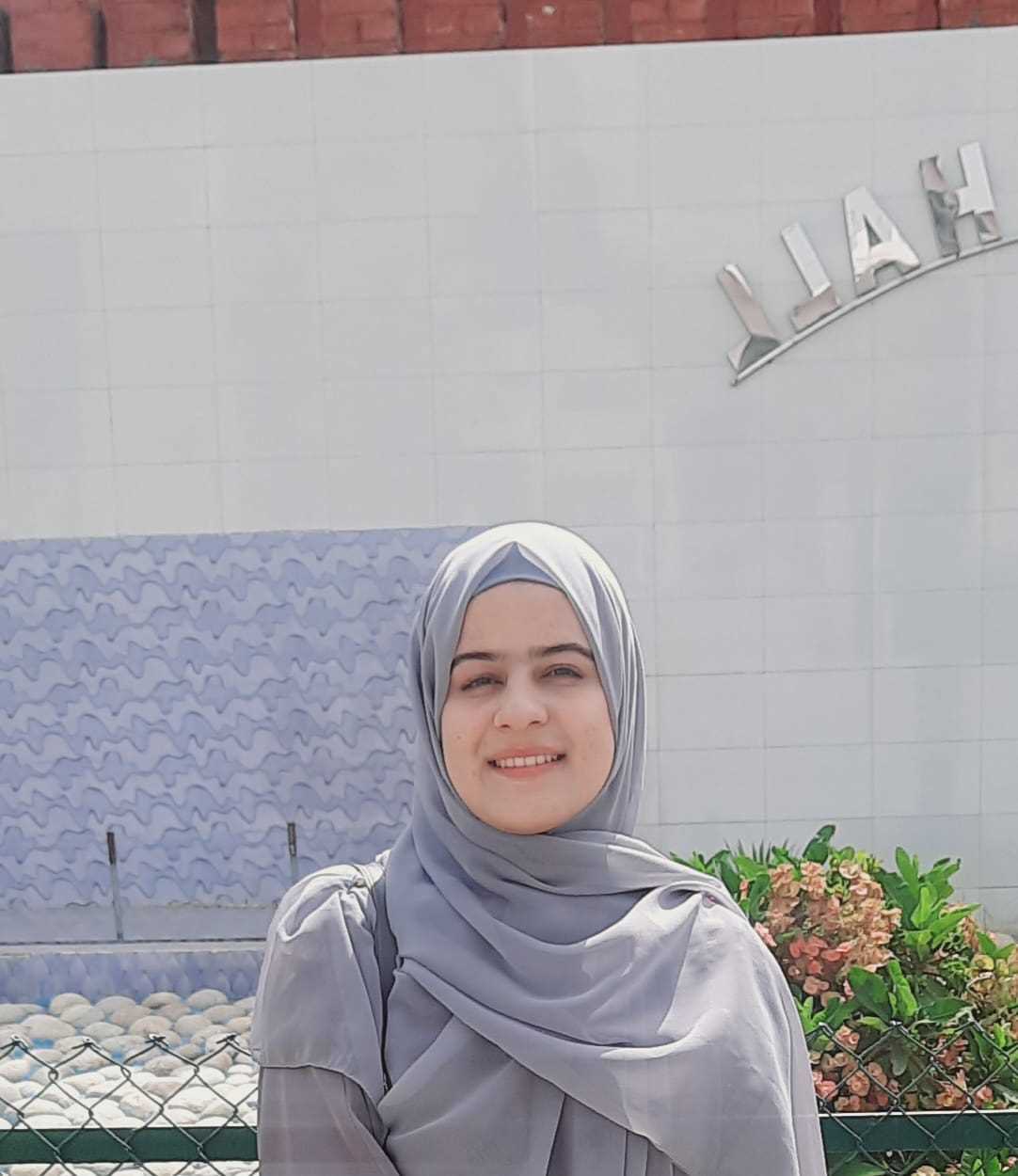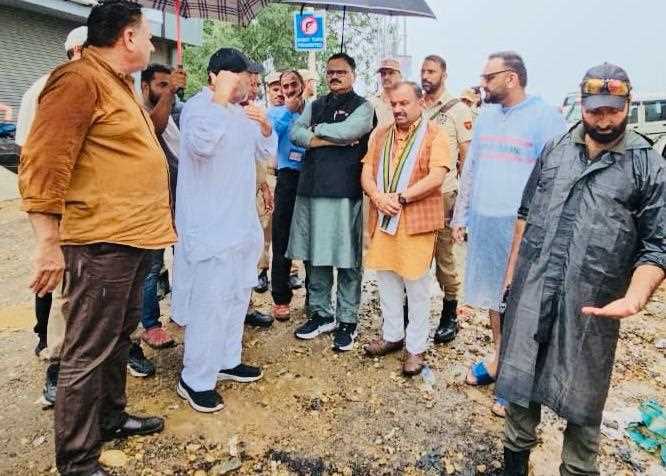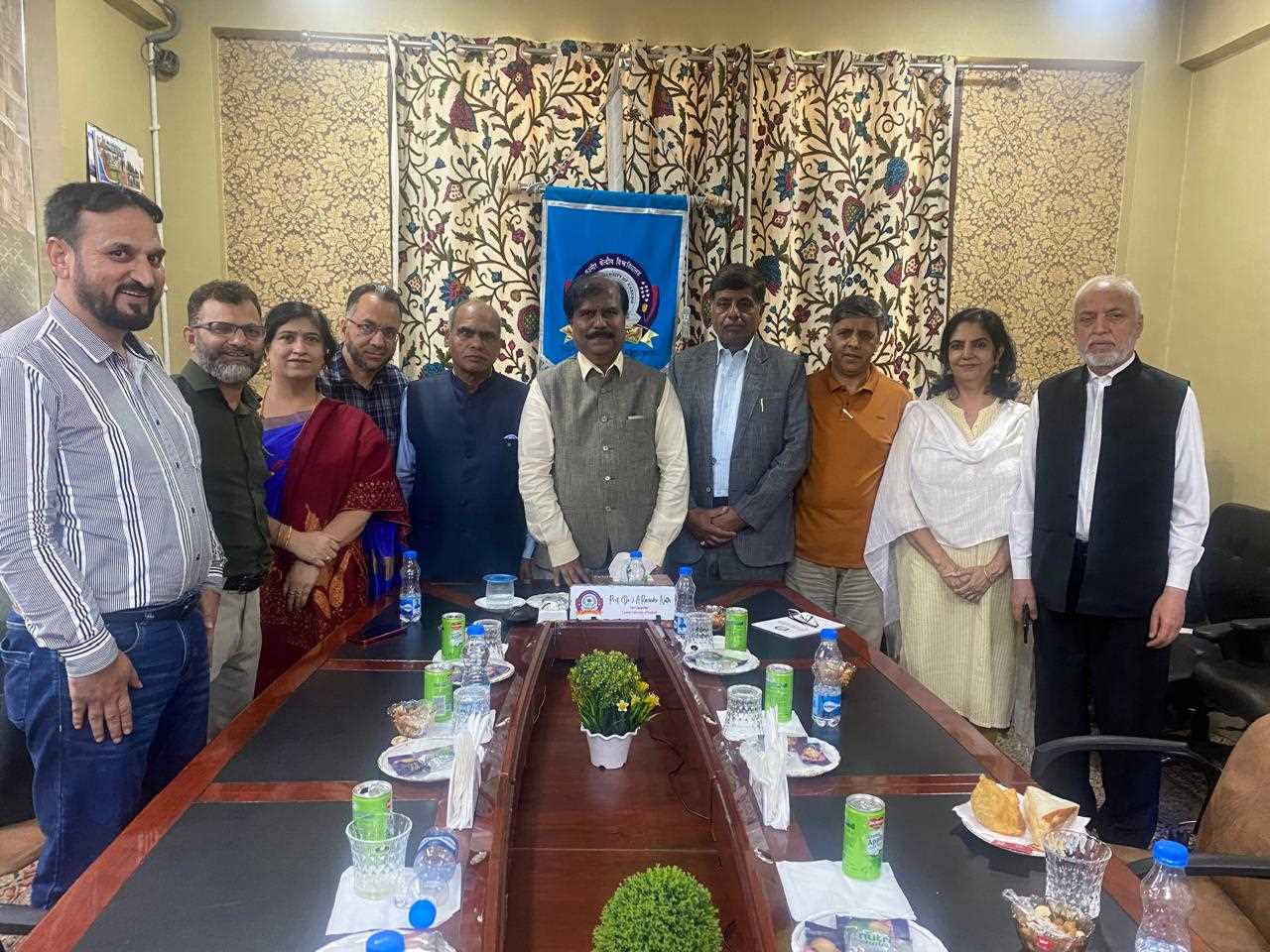
In my childhood, speaking Kashmiri at school was discouraged, even punished. We were trained to speak in Urdu or English, and slowly, we began to feel ashamed of our mother tongue. Over time, we internalized the idea that Kashmiri was inferior, rustic—even backward. This linguistic alienation limits not only our personal identity but also our global expression
As I observe Generation Alpha and attempt to communicate with them, I notice a pattern—these children often speak a blended mix of Kashmiri, Urdu, and English, with Urdu becoming the dominant language. This linguistic shift in Kashmir reflects a deeper cultural erosion.
The valley of Kashmir, long celebrated for its snow-capped mountains, lush forests, golden autumns, and colorful springs, is not just a land of political narratives—it is a land of identity. One of the most distinctive markers of this identity is the Kashmiri language, Koshur. Once the lifeblood of folklore, literature, and daily life, Kashmiri is slowly dying—line by line, word by word.
According to Encyclopaedia Britannica, "Kashmiri, by origin, is a Dardic language, but it has become predominantly Indo-Aryan in character." The linguistic shift began in the 19th and 20th centuries, particularly when Urdu replaced Kashmiri as the language of administration.
Despite being the mother tongue of over seven million people, its use is steeply declining. UNESCO's Atlas of the World's Languages in Danger lists Kashmiri among those at risk. From schools to offices, homes to media, Urdu and English dominate. The arrival of advanced technology, particularly post-COVID, has widened the generational language gap between Baby Boomers, Generation X, and younger generations. A language that once built bridges is now a ghost between generations.
Children no longer hear lullabies in Kashmiri. I still remember how my grandmother would sing to me, and my grandfather’s stories of witches like Rantas and heroes like Sumpahalwan are etched in my memory. Today, children fall asleep to YouTube Shorts and cartoons in foreign tongues. I often observe parents handing screens to their toddlers, unintentionally feeding them a linguistic diet devoid of their roots.
In my childhood, speaking Kashmiri at school was discouraged, even punished. We were trained to speak in Urdu or English, and slowly, we began to feel ashamed of our mother tongue. Over time, we internalized the idea that Kashmiri was inferior, rustic—even backward. This linguistic alienation limits not only our personal identity but also our global expression.
When a language dies, an entire cultural heritage dies with it—rituals, songs, values, even the Wanvun sung at weddings and baby ceremonies is disappearing, replaced by Bollywood songs and rap. Urbanization has led to a class of English- and Urdu-speaking Kashmiris who view Kashur with disdain. Despite its inclusion in the Eighth Schedule of the Indian Constitution, the language lacks institutional backing. Conflict and migration have only deepened the disconnection.
Take these powerful lines:
"Gareh Wandai Gareh Saasa, Bareh Nearhai Ne Zanh,
Chetith Aawsai Koh Saasa Cxe Hue Khaasa Wuchum ne Kenh" ( Shiekh Ul Alam RA)
"O home Kashmir, I will sacrifice thousands of houses for you.
I have been to several places, but none is dearer than you."
Home is not merely a place to live—it is an emotion, tied to language, culture, dress, cuisine, and memory. Kashmiri is more than just a means of communication—it is a vessel of collective memory. And I, like many others, feel like an orphan of my own language.
Though Kashmiri literature is rich, classical, and deeply moving, it risks becoming voiceless if the language it is written in disappears. Language carries more than words; it carries emotion, metaphors, idioms, and above all, unity. When a mother says "I love you my child", the words are heartfelt—but when she says "Hoo lajya mouj wandith", it gives you goosebumps. Every Kashmiri has felt that.
Embedded in the language are the mystical Vaakhs of Lalla Ded and the Shruks of Sheikh-ul-Alam—verses that carry deep spiritual and ethical lessons, with power to shape character and conscience.
Reviving a dying language is not impossible. Hebrew, once near extinction, was revived as a common Jewish language through the work of Eliezer Ben-Yehuda. In the Jammu region, Dogri gained official status and is now chosen by UPSC aspirants as an optional subject. Media, radio, and cultural programming have helped it flourish.
The same can happen with Kashmiri.
Steps for revival:
Make Kashmiri a compulsory subject in schools with engaging textbooks.
Use digital platforms—YouTube, podcasts, and animations—to teach and celebrate the language.
Provide government incentives to media houses and publishers who use and promote Kashmiri.
Organize competitions in schools for writing, poetry, and oratory in Kashmiri.
Celebrate cultural days with emphasis on mother tongues.
Support from institutions like Jammu and Kashmir Academy of Art, Culture, and Languages (JKAACL) must be encouraged—through publishing, awards, and cultural exchanges.
But most importantly, revival must begin at home. Parents must take pride in speaking Kashmiri to their children. Civic movements should encourage pledges to speak it daily. As a writer, I feel a sharp pain knowing I can write fluently in English and Urdu, but not in my own mother tongue. It’s a wound many of us carry.
Reviving Kashmiri is not just about preserving culture—it’s about preserving souls that have endured too much erasure. If the world truly wants to understand Kashmir, it must begin not with the noise of politics, but by listening to the echo of its mother tongue.
Email:-------------------------- muskanshafimalik@gmail.com


In my childhood, speaking Kashmiri at school was discouraged, even punished. We were trained to speak in Urdu or English, and slowly, we began to feel ashamed of our mother tongue. Over time, we internalized the idea that Kashmiri was inferior, rustic—even backward. This linguistic alienation limits not only our personal identity but also our global expression
As I observe Generation Alpha and attempt to communicate with them, I notice a pattern—these children often speak a blended mix of Kashmiri, Urdu, and English, with Urdu becoming the dominant language. This linguistic shift in Kashmir reflects a deeper cultural erosion.
The valley of Kashmir, long celebrated for its snow-capped mountains, lush forests, golden autumns, and colorful springs, is not just a land of political narratives—it is a land of identity. One of the most distinctive markers of this identity is the Kashmiri language, Koshur. Once the lifeblood of folklore, literature, and daily life, Kashmiri is slowly dying—line by line, word by word.
According to Encyclopaedia Britannica, "Kashmiri, by origin, is a Dardic language, but it has become predominantly Indo-Aryan in character." The linguistic shift began in the 19th and 20th centuries, particularly when Urdu replaced Kashmiri as the language of administration.
Despite being the mother tongue of over seven million people, its use is steeply declining. UNESCO's Atlas of the World's Languages in Danger lists Kashmiri among those at risk. From schools to offices, homes to media, Urdu and English dominate. The arrival of advanced technology, particularly post-COVID, has widened the generational language gap between Baby Boomers, Generation X, and younger generations. A language that once built bridges is now a ghost between generations.
Children no longer hear lullabies in Kashmiri. I still remember how my grandmother would sing to me, and my grandfather’s stories of witches like Rantas and heroes like Sumpahalwan are etched in my memory. Today, children fall asleep to YouTube Shorts and cartoons in foreign tongues. I often observe parents handing screens to their toddlers, unintentionally feeding them a linguistic diet devoid of their roots.
In my childhood, speaking Kashmiri at school was discouraged, even punished. We were trained to speak in Urdu or English, and slowly, we began to feel ashamed of our mother tongue. Over time, we internalized the idea that Kashmiri was inferior, rustic—even backward. This linguistic alienation limits not only our personal identity but also our global expression.
When a language dies, an entire cultural heritage dies with it—rituals, songs, values, even the Wanvun sung at weddings and baby ceremonies is disappearing, replaced by Bollywood songs and rap. Urbanization has led to a class of English- and Urdu-speaking Kashmiris who view Kashur with disdain. Despite its inclusion in the Eighth Schedule of the Indian Constitution, the language lacks institutional backing. Conflict and migration have only deepened the disconnection.
Take these powerful lines:
"Gareh Wandai Gareh Saasa, Bareh Nearhai Ne Zanh,
Chetith Aawsai Koh Saasa Cxe Hue Khaasa Wuchum ne Kenh" ( Shiekh Ul Alam RA)
"O home Kashmir, I will sacrifice thousands of houses for you.
I have been to several places, but none is dearer than you."
Home is not merely a place to live—it is an emotion, tied to language, culture, dress, cuisine, and memory. Kashmiri is more than just a means of communication—it is a vessel of collective memory. And I, like many others, feel like an orphan of my own language.
Though Kashmiri literature is rich, classical, and deeply moving, it risks becoming voiceless if the language it is written in disappears. Language carries more than words; it carries emotion, metaphors, idioms, and above all, unity. When a mother says "I love you my child", the words are heartfelt—but when she says "Hoo lajya mouj wandith", it gives you goosebumps. Every Kashmiri has felt that.
Embedded in the language are the mystical Vaakhs of Lalla Ded and the Shruks of Sheikh-ul-Alam—verses that carry deep spiritual and ethical lessons, with power to shape character and conscience.
Reviving a dying language is not impossible. Hebrew, once near extinction, was revived as a common Jewish language through the work of Eliezer Ben-Yehuda. In the Jammu region, Dogri gained official status and is now chosen by UPSC aspirants as an optional subject. Media, radio, and cultural programming have helped it flourish.
The same can happen with Kashmiri.
Steps for revival:
Make Kashmiri a compulsory subject in schools with engaging textbooks.
Use digital platforms—YouTube, podcasts, and animations—to teach and celebrate the language.
Provide government incentives to media houses and publishers who use and promote Kashmiri.
Organize competitions in schools for writing, poetry, and oratory in Kashmiri.
Celebrate cultural days with emphasis on mother tongues.
Support from institutions like Jammu and Kashmir Academy of Art, Culture, and Languages (JKAACL) must be encouraged—through publishing, awards, and cultural exchanges.
But most importantly, revival must begin at home. Parents must take pride in speaking Kashmiri to their children. Civic movements should encourage pledges to speak it daily. As a writer, I feel a sharp pain knowing I can write fluently in English and Urdu, but not in my own mother tongue. It’s a wound many of us carry.
Reviving Kashmiri is not just about preserving culture—it’s about preserving souls that have endured too much erasure. If the world truly wants to understand Kashmir, it must begin not with the noise of politics, but by listening to the echo of its mother tongue.
Email:-------------------------- muskanshafimalik@gmail.com
© Copyright 2023 brighterkashmir.com All Rights Reserved. Quantum Technologies